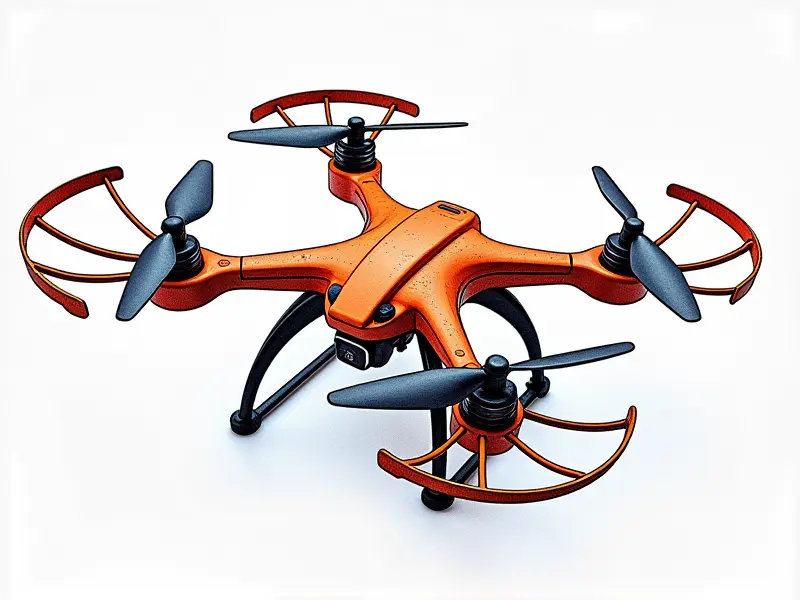Propeller diameter?

Best Prop Sizes for FPV Racing Drones
The propeller diameter is a critical factor in determining the performance of your FPV racing drone. The right size can significantly impact speed, agility, and overall flight characteristics. For high-performance setups, smaller diameters like 5035 or 5045 are preferred due to their ability to generate more thrust with less rotational inertia, allowing for faster acceleration and tighter maneuverability.
Impact of Propeller Diameter on Flight Performance
The diameter of a propeller directly affects the lift generated by your drone. Larger propellers can produce greater lift but at the cost of increased drag and slower response times. Smaller props, conversely, offer quicker acceleration and better efficiency in tight spaces, which is ideal for racing scenarios.
How Propeller Diameter Affects Performance
- Lift: Larger diameter propellers generate more lift due to the increased surface area interacting with air.
- Drag: Smaller props reduce drag, allowing for faster speeds and improved maneuverability.
- Inertia: Smaller props have less rotational inertia, leading to quicker acceleration and better responsiveness.
Optimal Propeller Size for RC Quadcopters
The optimal propeller size depends on the specific requirements of your quadcopter. For racing drones, smaller diameters are generally preferred due to their ability to provide high thrust-to-weight ratios and rapid acceleration. However, for larger or heavier drones designed for stability and payload capacity, a larger diameter might be more suitable.
Selecting Propellers by Quadcopter Type
Choosing the right propeller size involves considering several factors:
- Racing Drones: Opt for smaller diameters like 5035 or 5045 to maximize speed and agility.
- Cine Quads: Larger props such as 6045 or 7045 are better suited for stability and smooth camera operation.
- Multicopter Frames: Frame design, motor specifications, and intended use dictate the optimal propeller size.
Propeller Diameter Guide for Beginners
For beginners, selecting the right propeller diameter can be challenging. Start by understanding your drone's capabilities and objectives. If you're building a racing drone, smaller props like 5035 or 5045 are recommended. For more relaxed flying experiences, larger diameters such as 6045 might offer better stability.
Maximizing Efficiency with Proper Props
To maximize efficiency and performance:
- Select the Right Diameter: Choose a propeller size that matches your drone's frame and motor capabilities.
- Balance Thrust and Drag: Opt for props that provide adequate lift while minimizing drag for optimal speed and maneuverability.
Choosing the Right Propeller Diameter
The process of selecting the right propeller diameter involves balancing several factors such as motor power, frame design, and intended use. Smaller diameters are ideal for racing drones due to their quick acceleration and agility, while larger props offer better stability and lift capacity.
Common Mistakes in Propeller Selection
Avoid these common pitfalls:
- Mismatching Props with Motors: Ensure your propellers are compatible with the motor specifications.
- Oversizing or Undersizing: Select a diameter that matches your drone's capabilities and intended use.
Understanding Drone Propeller Dimensions
Propeller dimensions are typically denoted by two numbers, such as 5045. The first number represents the diameter in millimeters (mm), while the second indicates the pitch in inches. For example, a 5045 prop has a 50 mm diameter and a 45 inch pitch.
Matching Propellers to Your Quadcopter Frame
Selecting props that fit your frame is crucial:
- Frame Compatibility: Ensure the propeller fits securely on your quadcopter's arms without interference.
- Motor Specifications: Verify that the chosen propellers are compatible with your motor’s RPM and power output.
Conclusion
Selecting the right propeller diameter is essential for optimizing the performance of your FPV racing drone or any RC quadcopter. Understanding how propeller size affects lift, drag, and inertia can help you make informed decisions that enhance speed, agility, and overall flight characteristics. By considering factors such as frame design, motor specifications, and intended use, you can maximize efficiency and achieve the best possible performance from your drone.

